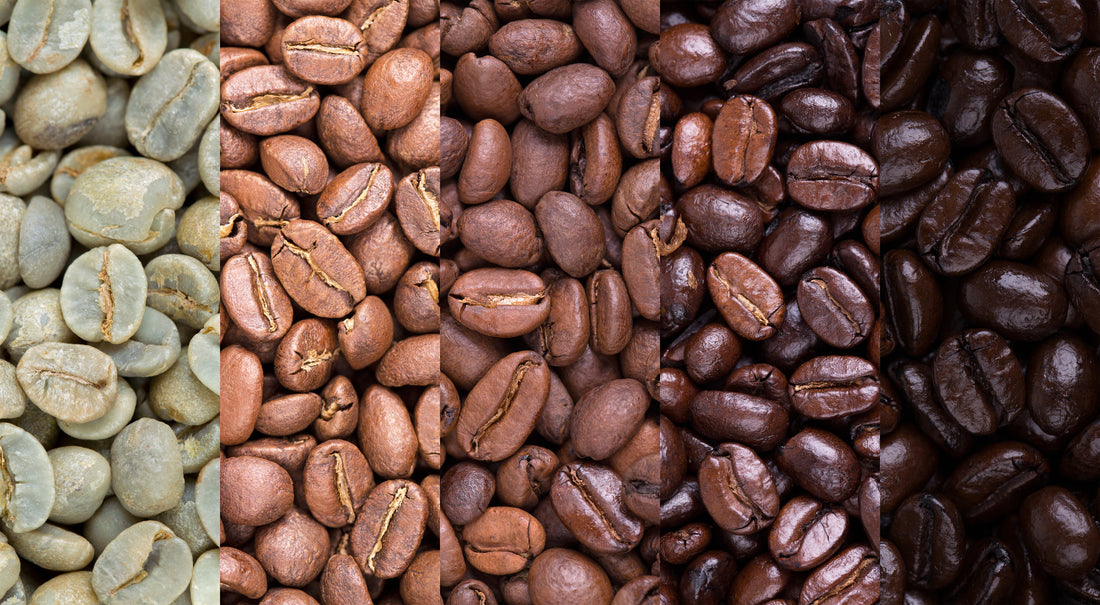How to Choose the Best Coffee Beans for Coffee Lovers
Americans consume over 400 million cups of coffee every day. But real coffee lovers know there's a difference between a cup of coffee and a cup of great coffee. The coffee world has become more complicated. Coffee shops have large menus filled with exotic-sounding coffees. Grocery stores dedicate entire aisles to coffee brands. And every day, a new coffee trend pops up on social media.
So how can you make the right choice? The secret is in the beans. Let's take a look at what makes the best coffee beans for coffee lovers!
What Countries Produce the Best Coffee Beans?
Over 50 countries around the world produce coffee. The top three producers globally are Brazil, Vietnam, and Colombia. But which one is the best? According to industry experts, Ethiopian coffee ranks as the best in the world. It's no surprise since Ethiopia is the birthplace of Arabica coffee. Ethiopian coffee has a gentle, sweet, and slightly fruity taste.
Kenyan coffee came in second, while Colombian coffee ended up in third place. But a lot of smaller coffee-producing regions are becoming more popular as the love for gourmet coffee grows. For example, Costa Rica and Nicaragua are known for their delicious, fresh coffee. If you're looking for something a little more local, Hawaiian Kona coffee is a must-try! It has a light and fruity flavor profile with a crisp finish.
Should You Purchase Whole Bean or Ground Coffee?
Coffee purists will say that whole bean is the only real option. But ground coffee has a lot to offer as well! A complex flavor profile is the main advantage of buying whole beans. Using the bean means you're getting the freshest grind every time. Ground coffee can sometimes lack that crisp feeling. Opening a bag of whole beans, you instantly get that amazing coffee smell. Since whole beans retain the oil that creates that heavenly coffee smell, they tend to be more aromatic. Sometimes, a bag of ground coffee can't compete.
Convenience, cost, and variety are the biggest benefits of ground coffee. It's ready in minutes, generally cheaper, and comes in limitless options. Ground coffee is an excellent choice for busy people or coffee lovers on a budget. Another option that's become popular in the past few years is single-use cups. Sometimes called pods or K-cups, these tiny capsules of coffee can be both convenient and rich in flavor. If you're worried about the environmental impact, Fresh Cup offers a reusable option!
What Are the Common Coffee Flavor Profiles?
Several factors influence coffee flavor profiles. The region, environment, and brewing method of the beans create different aromas and tastes. Some of the most common flavor profiles include:
- Chocolate
- Fruity
- Floral
- Spicy
- Nutty
- Woodsy
Lighter roast coffee usually has fresh notes like floral and fruity. Dark roasts are full of rich notes, like smoky or spicy. You can also get a variety of flavored coffee types! This Coffee Flavor Chart is a great resource for exploring tastes and aromas.
What is the Difference Between Single Origin and Blends?
If you buy a bag of coffee from a big name brand, you'll probably have no idea where that coffee came from. That's the basic idea behind blends. A coffee blend is a mix of beans from different locations worldwide. Every single bean in a bag of single-origin coffee came from the same location. Many people, especially coffee purists, prefer single-origin coffee. But why is it so important? The basic differences are taste, cost, and principle.
Taste
Single-origin coffees have a unique, location-dependent taste. So, a single original Ethiopian coffee will taste very different from a Costa Rican one. Their distinct flavor profile is one of their selling points.
When done wrong, coffee blends can be bland. But when blended properly, they can have very exciting flavor profiles. Combining notes of chocolate with fruit, for example, can create a new flavor profile to tingle your taste buds.
Cost
Single-origin coffees tend to be more expensive than blends. They are usually produced on small lots and are picked by hand. Fair-trade and organic single-origin coffees are very common. The fair-trade label makes the coffee easily traceable and increases the cost. Since workers are getting paid a fair, living wage, the cost naturally increases.
Principle
Many coffee drinkers would say that a freshly roasted cup of single-origin coffee is the best option. Because all the beans come from the same location, it can provide a unique flavor profile. You can learn a lot about a country through its coffee's flavor.
On the other hand, a coffee roaster creating their blend may say that blends are the better choice. Blends can harmoniously combine different notes to make a new and exciting flavor profile. A blend is also usually a low-acid coffee, making it easier to drink.
Which Brewing Method Will Produce the Best Tasting Cup of Coffee?
Around 45% of coffee consumers prefer to use a drip coffee maker while 13% like espresso machines. So, which one makes the best coffee? The answer really depends on preference. A drip coffee maker is more diverse. Depending on the beans you use, it can make a rich or light-tasting coffee. An espresso machine will produce a hearty, rich taste every time. Convenience, time, and cost are also factors to consider. Most people rely on their drip coffee maker's ease of use. Coffee makers are fast, simple, and can be programmed to have your coffee ready as soon as you wake up.
Espresso machines are more time-consuming and have a slight learning curve. Professional machines are also quite expensive. So the answer depends on your taste preference and lifestyle.
Does Caffeine Affect the Taste of Coffee Beans?
In short, yes. Caffeine adds a bitter and heavy flavor to coffee. That's why if you're a coffee-lover, decaf may feel like a crime. Arabica beans tend to have a lighter flavor because they're lower in caffeine. If you're looking for a big caffeine kick, Robusta beans have higher levels and a more bitter taste.
What is the Difference Between Arabica and Robusta Beans?
Over 100 different types of coffee beans are grown around the world. For coffee consumers, the most common are Arabica and Robusta. You may have seen products and coffee shops proudly proclaim "100% Arabica beans." So why are Arabica beans so special and how are they different from Robusta beans?
Cultivation
Arabica coffee beans are more sensitive than Robusta beans. They need the perfect combination of sun, soil, temperature, and water. Robusta beans are a lot more hardy. They can withstand intense temperatures, and soil quality does not affect them. This makes Robusta beans cheaper and easier to grow.
Look
If you're trying to identify which whole beans are Arabica and which are Robusta, there's a simple way to do it. Look at the shape and the middle cut. Arabica beans are usually oval-shaped with a softly curved cut in the middle. Robusta beans are rounder, smaller, and have a straight line in the middle.
Content
These two species of beans differ in content as well. For example, Robusta coffee beans are much higher in caffeine than Arabica. An Arabica bean is about 1.2% caffeine while a Robusta bean is about 2.2%. Higher caffeine can be great when you need that mid-afternoon boost but it also creates a bitter taste. Arabica is much smoother because it also has a higher sugar and oil content. People tend to prefer Arabica because of its pleasant taste.
Taste
Arabica beans come in two varieties: washed and dry. Washed Arabica beans have a bright and fruity taste. Dry Arabica beans are processed differently and have a sweeter, more chocolate flavor. Robusta beans are known for being harsh and bitter. But a well-prepared Robusta bean can have some delicious and rich flavor notes.
Why Should You Purchase Fair Trade Organic Coffee?
Have you ever wondered who makes your coffee? Globally, over 125 million people work in the coffee-growing industry and many of them are underpaid.
Fair trade ensures that farmers who trade coffee are properly compensated. Not only that, but fair-trade programs help develop communities and provide essential services. Purchasing fair-trade coffee means supporting the coffee farmers' rights and livelihood. Most fair-trade coffee, about 80%, is considered organic. It's usually grown on smaller farms that can't afford expensive equipment and pesticides. But if added chemicals make you worry, you should be checking that your coffee is USDA-certified organic.
The Best Coffee Beans for Coffee Lovers
Whether you prefer a simple Americano or a fancy cold brew coffee, choosing the right beans is important. Even a coffee connoisseur must ask the right questions to get the best cup of coffee.
Single-origin or blend? Whole bean or ground? Ethiopian, Colombian, or Hawaiian? A lot of consideration goes into choosing the best coffee beans for coffee lovers. Luckily, Fresh Cup has a coffee for every preference. Explore our selection of gourmet coffees today!

